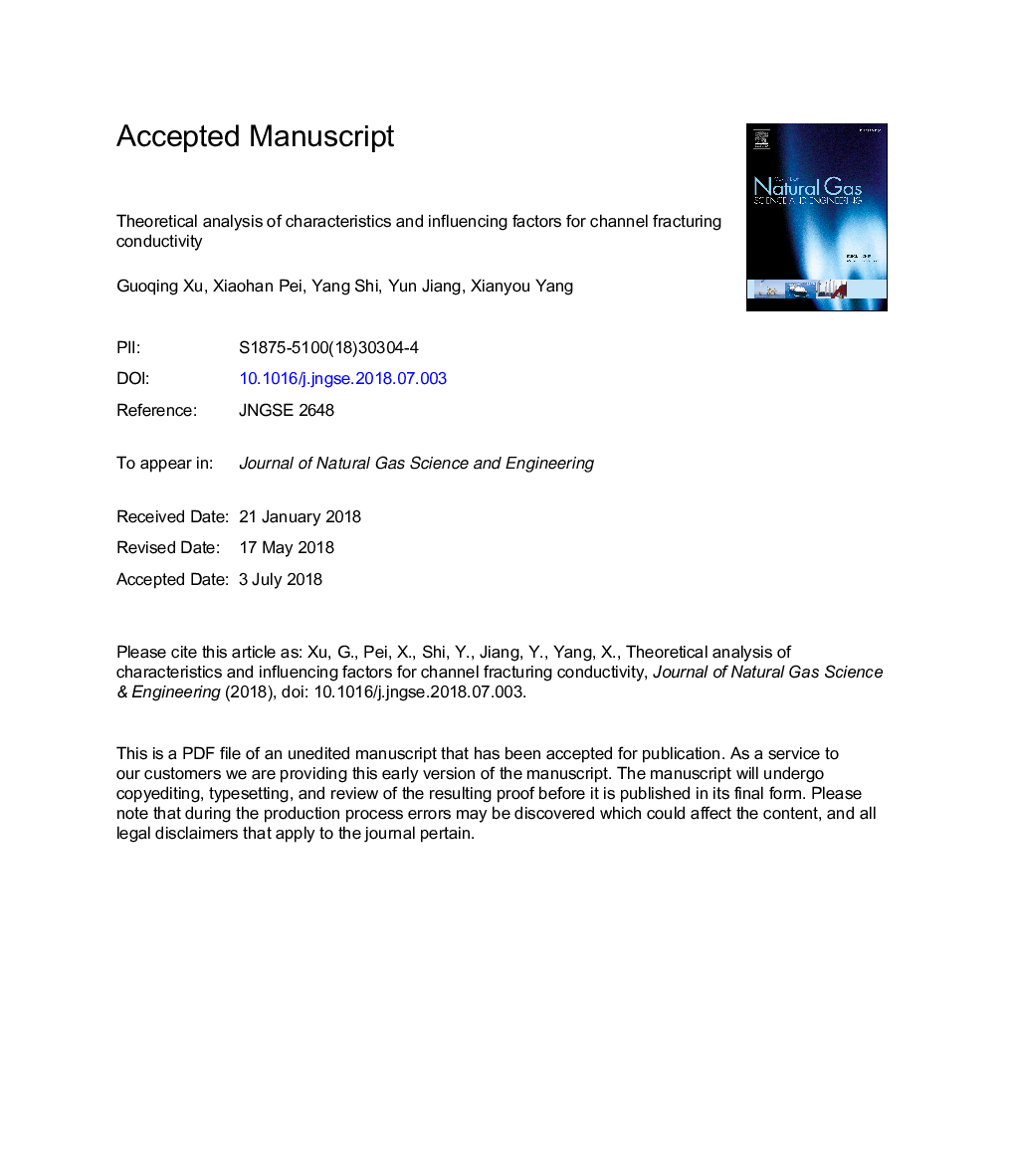| Article ID | Journal | Published Year | Pages | File Type |
|---|---|---|---|---|
| 8127802 | Journal of Natural Gas Science and Engineering | 2018 | 26 Pages |
Abstract
Channel fracturing is a novel hydraulic fracturing technology that is gaining increased attention, and the conductivity optimation involved in this technology is becoming a hotspot. However, for channel fracturing, recently presented conductivity models are derived based on Darcy flow under idealized conditions. This limitation motivates the development of the models that consider the new governing flow equations to describe the real flow status in channel fracturing. In this work, a generalized conductivity model is established by considering the embedment and pillar geometry of the proppant. The interrelationships and interactions among embedment, permeability, conductivity models are derived analytically. Based on evaluation with previously published experimental data, theoretical analysis and comparison are performed. Results show that the models can accurately describe the embedment, permeability, and conductivity change in channel fracturing. The factors that influence changes in fracture conductivity are further investigated by numerical simulations and we find that the theoretical conductivity model can be used to characterize flow behavior under different conditions in channel fracturing. This paper provides a theoretical basis for evaluating the critical factors governing conductivity, thereby providing a reference for the optimization of construction in channel fracturing design.
Related Topics
Physical Sciences and Engineering
Earth and Planetary Sciences
Earth and Planetary Sciences (General)
Authors
Guoqing Xu, Xiaohan Pei, Yang Shi, Yun Jiang, Xianyou Yang,
